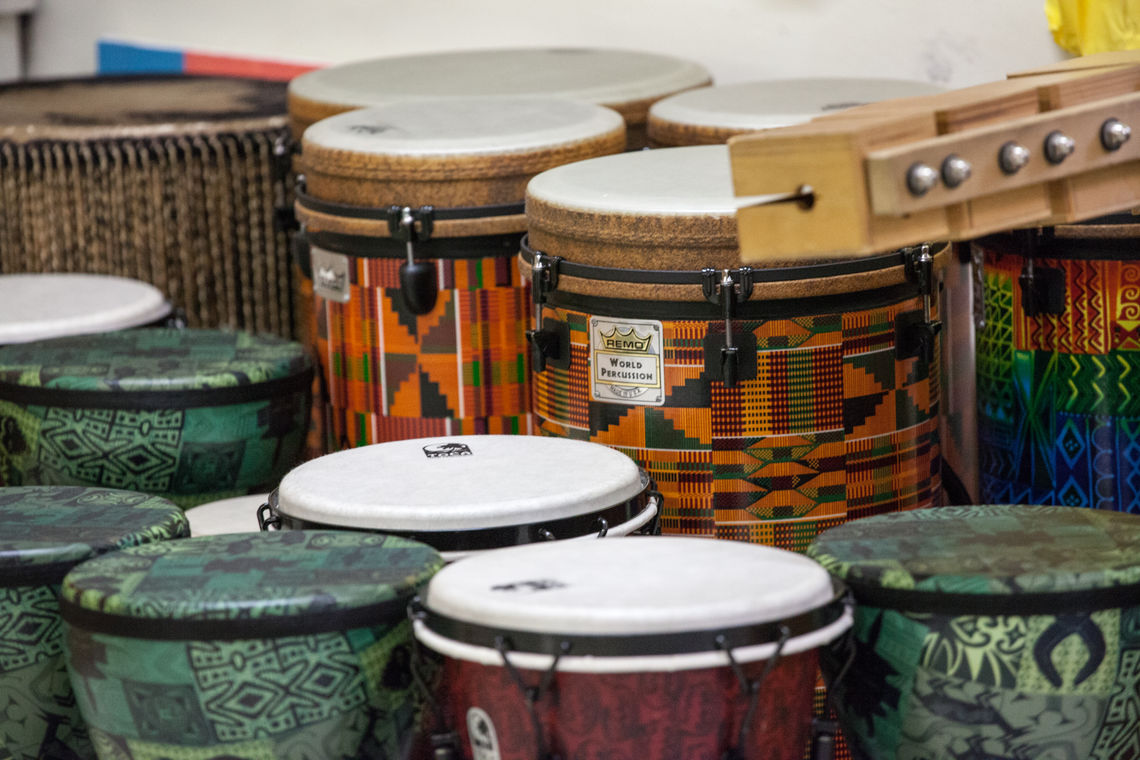Admission Open House:
December 5, 8:45 am
All welcome!
December 5, 8:45 am
All welcome!
- Home /
- The Arts /
- General Music (PK to 6)
Navigate
General Music (PK to 6)
-

General Music units in grades 4-6The general music program is built on a spiraling curriculum made up of central skills and content areas, which students re-visit each year. Responding to music, creating music and performing music make up the core themes of the program, and guide the specific lessons, units and projects at each grade level.Responding to Music
Over the course of the general music program, responding to music, (describing or interacting with music) builds from dance-like movement and drawing in the lower grades to class discussions and written descriptions using musical terminology in middle school. Through play and musical story units, children learn to identify orchestral instruments by sight and sound. Students in PreK- 2nd grade study instrumental pieces like Prokofiev’s Peter and the Wolf and Saint-Saëns’ Carnival of the Animals, in which specific instruments represent characters and animals in the story. Students respond to these pieces by acting them out and drawing what scene or image the music evokes for them.
Students learn about composers from musical history: 1-4 a year in grades PreK-2 and then one every month in grades 3-6. These grades learn about a well-known composer from Western Classical Music, Jazz or the Blues, or contemporary music. In addition to learning about his or her life, the students listen to significant pieces by the composer and participate in a responding activity. Composers of the month include (but are not limited to) Bach, Mozart, Beethoven, Vivaldi, Schubert, Tchaikovsky, Gershwin, Copland, Ellington, Armstrong, Billie Holiday, and Ella Fitzgerald.
Creating Music
Composition is central to the creating and performing areas of the music program. Beginning in PreK and Kindergarten, students are introduced to basic rhythms in several time signatures. They learn to produce rhythms by rote, imitation and reading. Over the years, students are introduced to several rhythmic patterns in both 4/4 and 6/8 time, and learn to read, notate and perform them. For grades 3-6, compositions range from one-part rhythmic compositions for percussion instruments, to rhythmic rhymes with lyrics, to pieces that incorporate 3-part harmony and chords. Students compose pieces independently or in small groups and perform for each other as part of the culminating assessment.
Performing Music
All students participate in the Winter and Spring Concerts. Grade clusters (PreK-K, 1-2, 3-4, and 5-6) prepare two songs for each concert and perform together for the school. The level of difficulty increases with each cluster: PreK and Kindergarten perform one-part pieces; 1st and 2nd sing lengthier songs as well as two-part rounds; 3rd and 4th as well as 5th and 6th sing pieces that are arranged for two-parts, the later of which are more difficult. Concert repertoire includes several genres: folk, pop, holiday-related pieces, Broadway, jazz, and traditional African-American Spirituals.
Students in general music classes also learn rehearsal skills and perform together as instrumental ensembles. -


